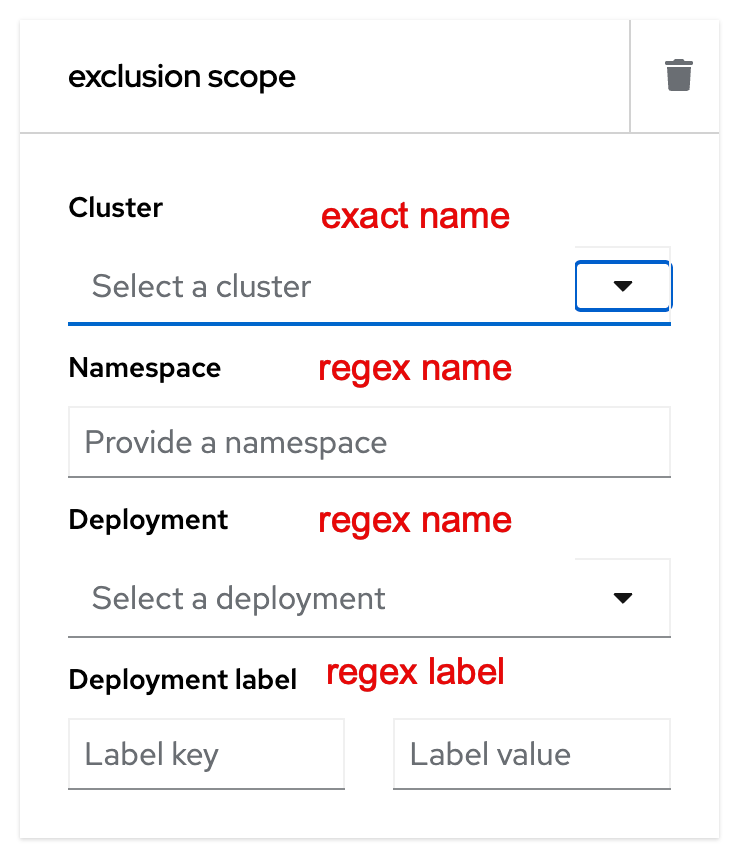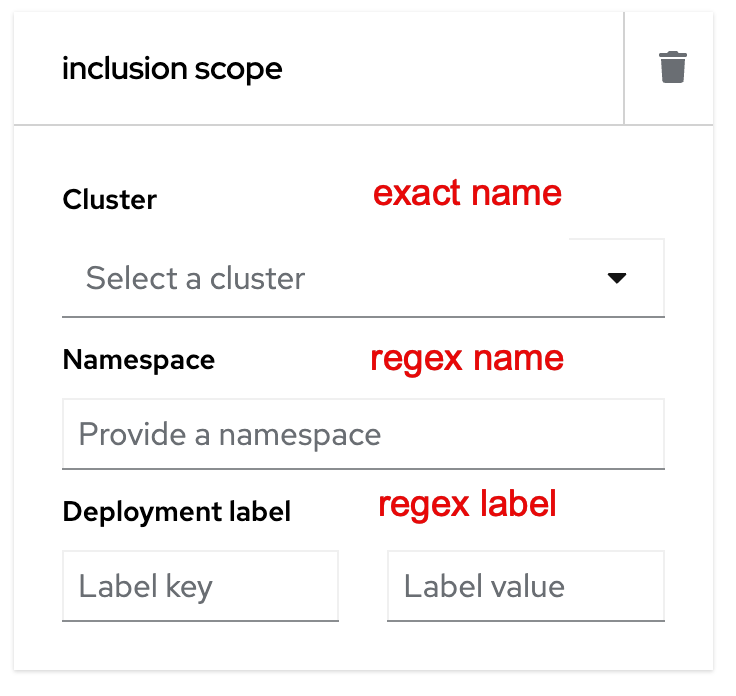-
Feature
-
Resolution: Unresolved
-
Critical
-
None
-
Future Sustainability
-
L
-
False
-
-
False
-
Not Selected
-
50% To Do, 50% In Progress, 0% Done
-
-
Enhancement
-
-
-
-
Yes
( Google doc was used to create content but this Jira is the source of truth)
Goal Summary:
Policy scopes would support
- Regex selection of labels for all three layers (cluster, namespace, deployment), for both inclusion and exclusion
- Regex selection of names for all three layers (cluster, namespace, deployment), for both inclusion and exclusion.
Goals and expected user outcomes:
As a policy editor, using UI or policy as code,
I want a way to include and exclude clusters, namespaces and deployments using a label selector,
so that I do not need to modify policies when my container infrastructure and workloads change. If I could use labels in the policies, then all I need to do is apply the appropriate label to the cluster or namespace as part of my automation.
Specifically,
- RFE-6742 Customer is PCI compliant, and thus needs to apply some specific policies for PCI; but they don't want them being applied everywhere. The cluster fleet constantly evolves, and they need the ability to define the policy's scope based on labels rather than names that cannot be predicted.
- RFE-7514, Customer needs a declarative method for inclusion of clusters by labels. Without it, when securedClusters are added or removed, the inclusion/exclusion scope needs to be updated.
Context
We currently have gaps for expressing inclusion and exclusion scopes, which limits customers who want to apply automated processes as described above. The reason we have not improved it until now is that we were planning to replace policy scoping with Named Scopes .
Current functionality
This is the functionality supported by the UI. Policy-as-code functionality is presumed to include the same at a minimum but may (or may not) be a superset.
| Exclusion | Inclusion |
 |
 |
Acceptance Criteria:
Functional Requirements
All these requirements shall be supported with both UI and policy-as-code:
- P1: this is the MVP required to ship
- P2: this should be planned with all intent to deliver , but if something goes wrong we could postpone to next release
- P3, P4: This is desired in order to maintain consistency and eliminate confusion, but deemed less useful. If we can only deliver part of it then P3 is a higher priority than P4.

NOTE:
It is not clear (to me - Boaz) if any of the above gaps are intentional (e.g. performance implications)
Non Functional Requirements
- Maintain security, reliability, performance, maintainability, scalability, usability and end user documentation standards.
- Specifically, if the full scope of requirements presents a performance challenge then we can discuss alternatives and negotiate hard requirements.
Success Criteria or KPIs measured (Optional):
A list of specific, measurable criteria that will be used to determine if the feature is successful. Include key performance indicators (KPIs) or other metrics., etc. Initial completion during Refinement status.
<enter success criteria and/or KPIs here>
Use Cases (Optional):
Include use case diagrams, main success scenarios, alternative flow scenarios together with user type/persona. Initial completion during Refinement status.
<your text here>
Out of Scope (Optional):
High-level list of items that are out of scope. Initial completion during Refinement status.
<your text here>